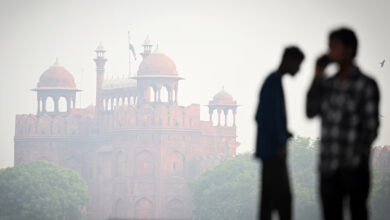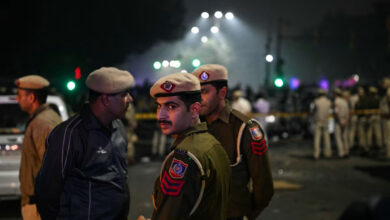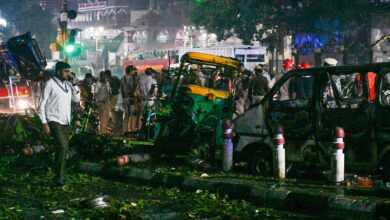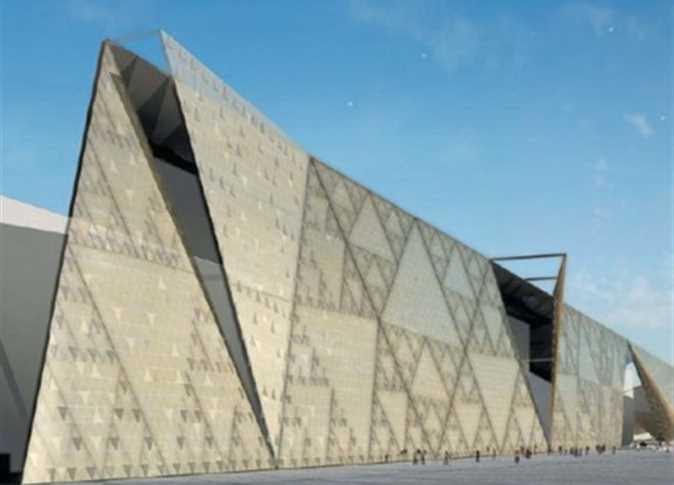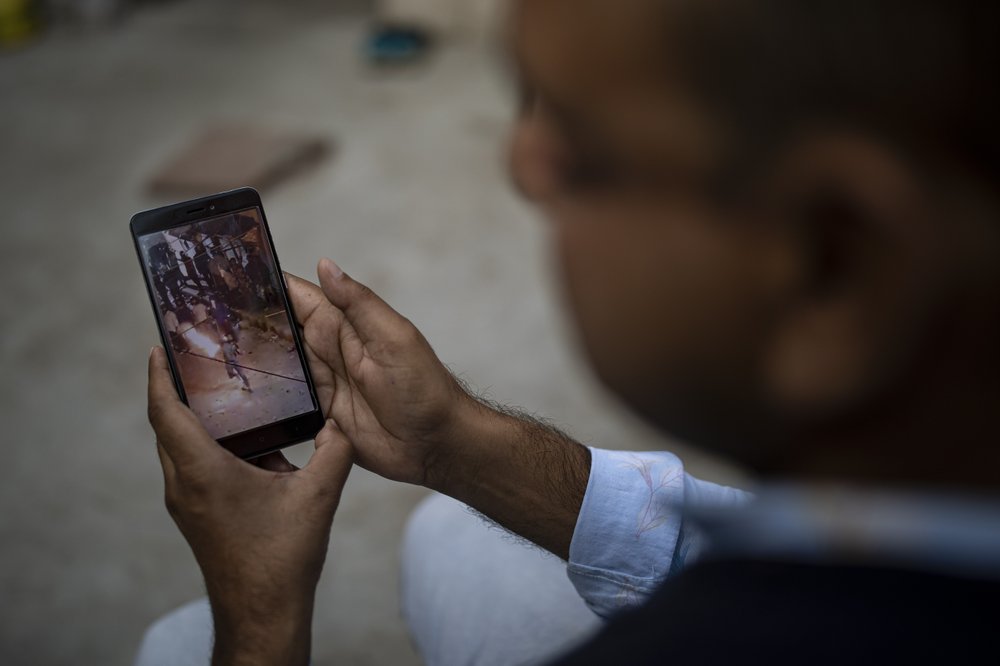
NEW DELHI (AP) — The shooter shouted “Victory to Lord Ram,” the Hindu god, before pulling the trigger that sent a bullet into Muhammad Nasir Khan’s left eye.
Khan placed his trembling hand on his bloody eye socket and his fingers slipped deep into the wound. At that moment, Khan was sure he would die.
Khan ended up surviving the violence that killed 53 others, mostly fellow Muslims, when it engulfed his neighborhood in the Indian capital 12 months ago.
But a year after India’s worst communal riots in decades, the 35-year-old is still shaken and his attacker still unpunished. Khan says he’s been unable to get justice due to a lack of police interest in his case.
“My only crime is that my name identifies my religion,” Khan said at his home in New Delhi’s North Ghonda neighborhood.
Many of the Muslim victims of last year’s bloody violence say they have run repeatedly into a refusal by police to investigate complaints against Hindu rioters. Some hope the courts will still come to their help. But others now believe the justice system under Prime Minister Narendra Modi’s Hindu-nationalist government has become stacked against them.
Adding to the sense of injustice is that accounts from Muslim victims as well as reports from rights groups have indicated that leaders of Modi’s Bharatiya Janata Party and the New Delhi police force tacitly supported the Hindu mobs during the fevered violence.
New Delhi police did not respond to repeated requests for comment, but they insisted last year that their investigation had been fair and that nearly 1,750 people had been booked in relation to the riots — half of them Hindus. Junior Home Minister G. Kishan Reddy has likewise told Parliament that police acted swiftly and impartially.
But a letter one senior police officer sent to investigators five months after the riots appeared to suggest them they go easy on Hindus suspected of violence, prompting criticism from the Delhi High Court.
Communal clashes in India are not new, with periodic violence breaking out ever since the British partition of the Indian subcontinent in 1947. But in the last seven years, observers say, religious polarization fueled by the Hindu nationalist base of Modi’s party has further deepened the fault lines and raised tensions.
Many believe the catalyst for last year’s riots was a fiery speech by Kapil Mishra, a leader from Modi’s party. On Feb. 23, 2020, he gave police an ultimatum, warning them to break up a sit-in by demonstrators protesting against a new citizenship law Muslims say is discriminatory, or he and his supporters would do it themselves.
When his supporters moved in it triggered pitched street battles that quickly turned into riots. For the next three days, Hindu mobs rampaged through streets hunting down Muslims — in some cases burning them alive in their homes — and torching entire neighborhoods, including shops and mosques.
Mishra rejects the idea that he’s responsible for the riots, calling the claims “propaganda” to cover up the “pre-planned genocide of Hindus by Muslims.” On Monday, he said his party had no links to the violence, but added, “what I did last year I will do it again if needed,” referring to his speech hours before the riots started.
Many in the area’s Hindu community accuse Muslims of starting the violence in a bid to make India look bad.
A year on, many Muslim victims of the riots are still cowering in fear of further bloodletting. Hundreds have abandoned their gutted homes and moved elsewhere. Those who chose to stay have fortified their neighborhoods with metal gates in case of more mob attacks. Many say they fear those responsible will never be held to account.
“Everything has changed since the riots,” Khan said. “I think I am slowly losing all my hopes of justice.”
Khan spent 20 days recovering in the hospital after being shot. Since then, he has been on a search for justice that he says has been impeded by police at every turn.
Khan’s official police complaint, seen by The Associated Press, named at least six Hindus from his neighborhood whom he said participated in the violence.
“The accused still come to my home and threaten me with killing my entire family,” Khan said in the complaint, adding that he was willing to identify them in court.
His complaint was never officially accepted.
Police, however, filed a complaint on their own. It gave a different version of events and places Khan at least a kilometer (0.6 mile) from where he was shot, suggesting he was injured in the crossfire between the two clashing groups. It didn’t identify his attackers.
The stories of many other Muslim victims follow a similar pattern. Police and investigators have dismissed hundreds of complaints against Hindu rioters, citing a lack of evidence despite multiple eyewitness accounts.
They include a man who saw his brother fatally shot, a father of a 4-month-old baby who witnessed his home being torched and a young boy who lost both his arms after Hindu mobs threw a crude bomb at him.
Now, many make weekly trips to lawyer Mehmood Pracha’s office, hoping for justice. Very few have seen their attackers put behind bars. Many others are still waiting for their cases to be heard in court.
Pracha, a Muslim, is representing at least 100 riot victims for free. He said there were multiple instances in which police were provided videos of Hindu mobs, many with links to Modi’s party, “but it seems that police were eager to implicate Muslims” in the riots.
He said in many cases Muslims were also “threatened to withdraw their complaints.”
“The police have acted as partners in crime,” Pracha said.
Multiple videos of the riots seen by the AP show police egging on Hindu mobs to throw stones at Muslims, destroying surveillance cameras and beating a group of Muslim men — one of whom later died.
Multiple independent fact-finding missions and rights groups have documented the role of police in the riots.
In June 2020, Human Rights Watch said “police failed to respond adequately” during the riots and were at times “complicit” in attacks against Muslims. It said authorities “failed to conduct impartial and transparent investigations.”
On a recent night, Haroon, who goes by one name, said he was “still scared of going out in the evening.”
He saw his brother Maroof fatally shot by his Hindu neighbors during the riots. The police never identified the accused in his complaint despite multiple eyewitnesses.
In turn, Haroon said, he was threatened by the police and the accused to withdraw his complaint.
“We were alone then and we are alone now,” he said nearly in tears as his dead brother’s two children sat beside him.
Haroon looked at them and said: “I don’t know what to do.”
Image; Muhammad Nasir Khan, who was shot by a Hindu mob during the February 2020 communal riots, watches a video showing a Hindu mob throwing petrol bomb towards a Muslim house in North Ghonda, one of the worst riot affected neighborhood, in New Delhi, India, Friday, Feb. 19, 2021. As the first anniversary of bloody communal riots that convulsed the Indian capital approaches, Muslim victims are still shaken and struggling to make sense of their struggle to seek justice. (AP Photo/Altaf Qadri)

